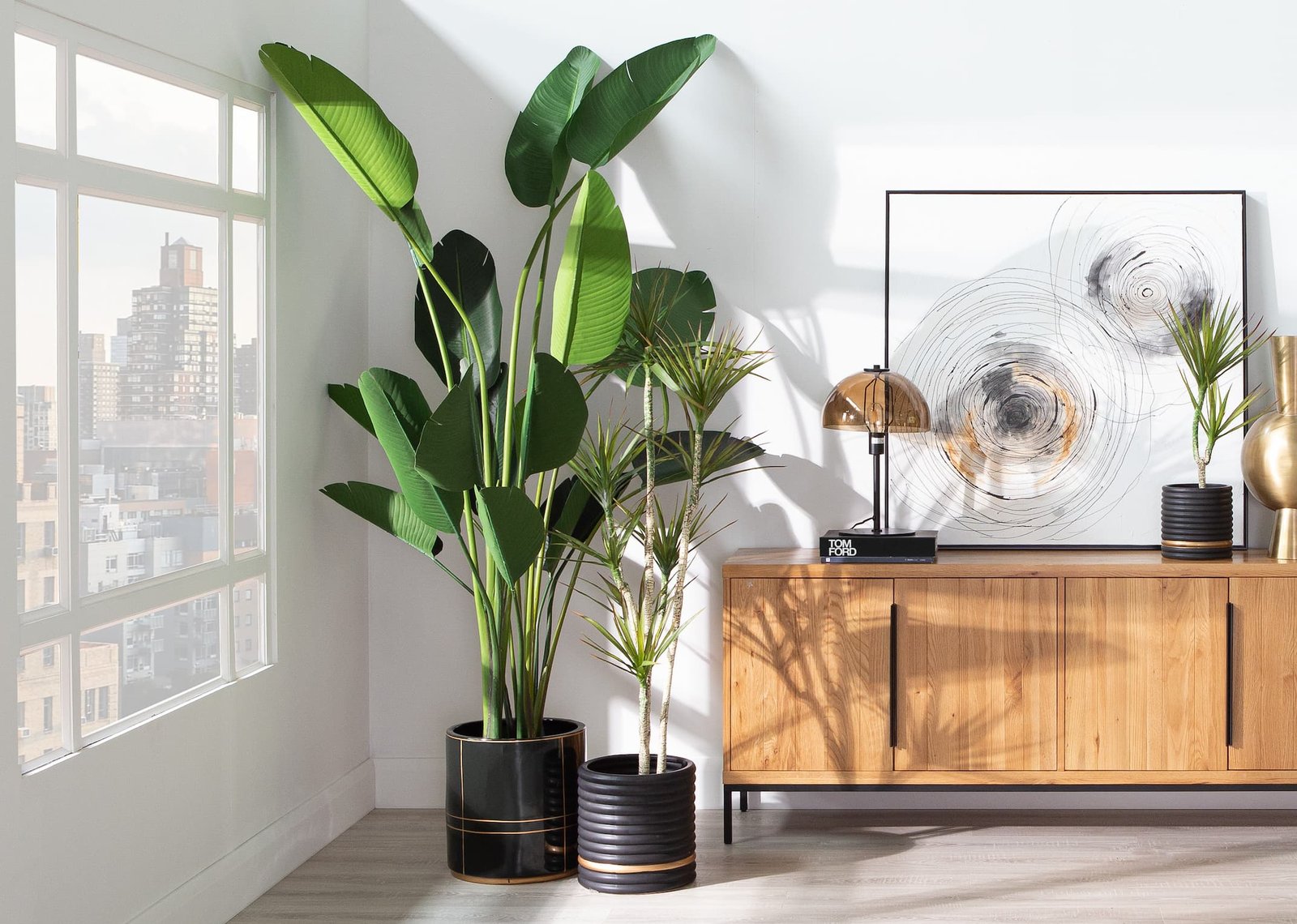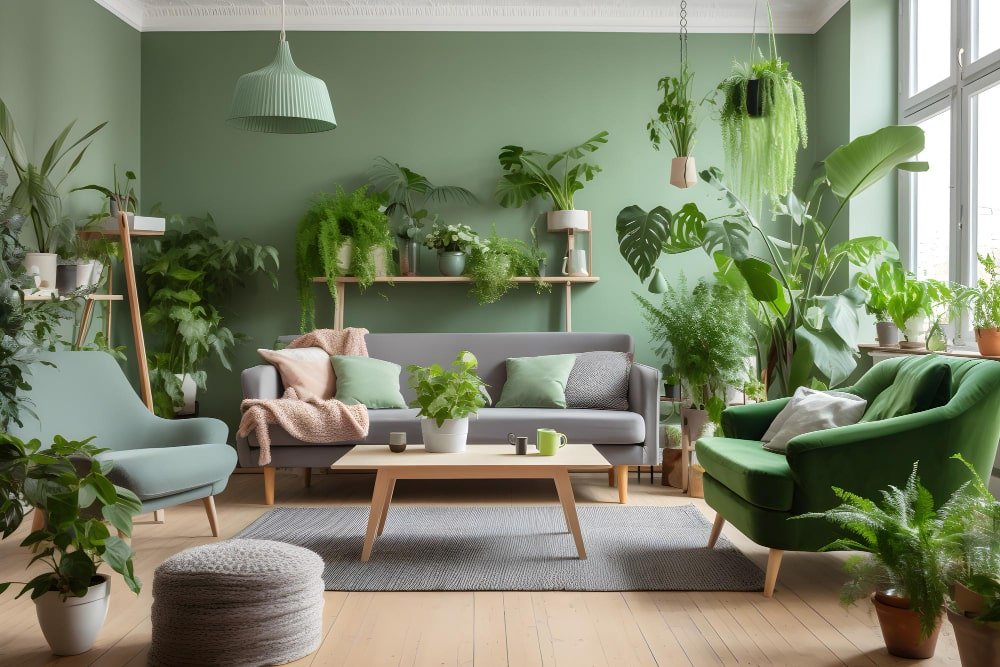
Top Tips for Natural Plant Care
Here are some basic plant preparations to help keep your plants healthy and lush:
- Light: Plants have different lighting requirements, so we need to create specific types of light. Some plants prefer bright, indirect light, while others may prefer low-light conditions or shade.
– Low-light plants: These plants grow in areas with minimal natural light and are ideal for places that are not exposed to direct sunlight.
Examples: Snake plant, ZZ Factory, Peace lily.
-Medium Light Plants: These plants require moderate light, meaning they can tolerate some direct sunlight but prefer bright, indirect light.
Examples: Spider Plant, Pothos, Dracaena, Ferns.
-Bright, Indirect Light Plants: These plants need bright light but should be kept out of direct sunlight, as direct sun can cause damage to their leaves.
Examples: Fiddle Leaf Fig, Rubber Plant, Orchid, Philodendron.
-Full Sun Plants: These plants require direct sunlight for a significant portion of the day.
Examples: Succulents, Cactus, Herbs, Certain flowering plants.
- Water: The amount of water an indoor plant needs varies depending on the type of plant, its size, the season, and light. However, here’s a general guide to help you understand how much water your indoor plants might need:
-Low Watering: These plants prefer to dry out between watering. Watering: Every 2–3 weeks, or when the top of soil is dry. Examples: Snake Plant, ZZ Plant, Cactus, Aloe Vera.
-Moderate Watering: These plants prefer to have consistently moist soil but should not sit in water. Watering: Every 7–10 days or when the top of soil is dry. Examples: Spider Plant, Peace Lily, Pothos, Dracaena.
-High Watering: These plants prefer their soil to stay moist. Watering: Every 5–7 days or when the top inch of soil feels dry. Examples: Ferns, Calathea, Bamboo Palm, Umbrella Plant (Schefflera).
Overwatering or Underwatering:
Overwatering: Yellow leaves, wilting despite wet soil, or a musty smell from the soil could indicate overwatering. Make sure pots have drainage holes to prevent water from accumulating at the bottom.
Underwatering: Dry, crispy leaves, especially at the edges, or soil that feels very dry and pulls away from the sides of the pot. Some plants may wilt temporarily due to lack of water but recover after watering.
- Humidity: Some plants, especially tropical ones, thrive in high humidity environments. You can increase humidity by misting your plants regularly or placing a tray of water near them. Alternatively, you can group plants together to create a microclimate of higher humidity. Plants from tropical regions typically need higher humidity levels to mimic their natural environment. These plants often have large, broad leaves that can lose moisture quickly in dry conditions, so maintaining adequate humidity is key to their health. Examples: Boston Fern, Philodendrons, Peace Lilies, Calatheas, Tropical plants.
- Fertilizing: Regularly fertilize your plants during their active growing season to provide them with essential nutrients. Follow the instructions on the fertilizer package and avoid over-fertilizing, as this can damage the plant’s roots.
- Pest Control: Keep an eye out for pests like aphids, mealybugs, and spider mites, and take appropriate measures to control them if they appear. This could involve wiping leaves with a damp cloth, using insecticidal soap, or introducing natural predators like ladybugs.
- Support: Some plants, such as vining or tall plants, may require support to help them grow upright. Use stakes, trellises, or other supports to prevent them from flopping over or breaking.
Finally, pay attention to your plants and adjust your care routine as needed. Plants will often give signals when they’re not happy, such as wilting, yellowing leaves, or stunted growth. By observing and responding to these cues, you can ensure your plants stay healthy and vibrant. And remember that each plant is unique and may have specific care requirements, so it’s essential to research the needs of each plant in your collection. With proper care and attention, you can create a thriving indoor garden that brings beauty and joy to your space.
Related Posts
The Benefits of Artificial Plants
In today’s fast-paced urban lifestyle, maintaining a connection with nature can be a challenge
The benefits of Natural Indoor Plants
The Unmatched Beauty and Benefits of Natural Indoor Plants In the hustle and bustle of modern living
How do you choose the right Pots?
Table of Contents Fiberglass Planters Concrete Planters Plastic Planters Terracotta and Ceramic Plan





Leave a Reply